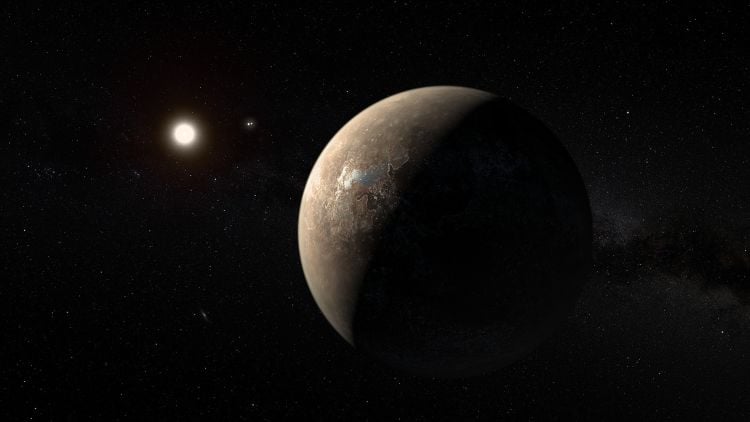How do tidal forces determine a planet’s orbital evolution, specifically planets in the habitable zone? This is what a recently submitted study hopes to address as an international team of researchers investigated how tidal forces far more powerful than experienced on Earth could influence orbital evolution of habitable zone planets with highly eccentric orbits around low-mass stars. This study has the potential to help researchers better understand the formation and evolution of exoplanets, specifically regarding where we could find life beyond Earth.
For the study, the researchers used a series of computer models to simulate tidal forces on Earth and three exoplanets: Proxima Centauri b, GJ 3323b, and TRAPPIST-1e, which are located approximately 4.24, 17.5, and 40 light-years from Earth, respectively. As noted, the researchers analyzed data from planets orbiting low-mass stars, and the mass of each planet’s star compared to our Sun is 0.12, 0.17, and 0.08, respectively.
Additionally, the observed eccentricities of the planets are approximately 0.35, 0.23, and 0.0051. For context, Earth’s observed eccentricity is 0.0167. One of the most important aspects of these planets is their semi-major axes (the distance from its star) are each much smaller than the Earth at 0.0485, 0.0328, and 0.0282 astronomical units (AU), respectively. For context, Earth is 1 AU from our Sun.
In the end, the models revealed that tidal force energy exerted on planets with eccentric orbits could result in their orbits being manipulated 1-2 orders of magnitude greater than Earth. Along with manipulating orbital evolution, the increased tidal forces could also influence planetary surface geography.
The study notes in its conclusions, “Under this condition, it is likely that all continents above the sea level would be easily eroded away by ocean tides, leaving no continent such that the planet would be more like an aqua-planet if the planet still has oceans. These tides may dramatically influence orbital evolution, climate, habitability, and observational features. The strong ocean tides can induce large tidal energy dissipation and can also enhance deep ocean mixing, oceanic overturning circulation and thereby equator-to-pole ocean heat transport. For asynchronously rotating planets with small eccentricities, the ocean tides would be much weaker but is still nonnegligible and comparable to that on Earth.”
The reason tidal forces have been studied for exoplanets is because the former is a common occurrence throughout our solar system, most notably between the Earth and its Moon. While Earth is approximately 81 times as massive as the Moon, the latter is large enough and orbits close enough to exert its gravitational pull on the former. This results in daily water bulging on opposite sides of the Earth, which is used primarily by the boating and fishing industries to determine the most opportune times for launching and recovering ships.
Beyond the Earth, tidal forces are observed between Jupiter and two of its Galilean moons, Io and Europa. As the much smaller Io orbit the much more massive Jupiter, for former’s eccentric orbit takes it closer and farther from Jupiter, resulting in Jupiter’s gravitational pull being greater and weaker, respectively. Over millions of years, this constant flexing and compressing of Io results in frictional heating of its interior, resulting in Io being the most volcanically active planetary body in the solar system.
Like Io, Europa’s orbit is also eccentric, but it is also receiving a gravitational pull from Ganymede, which orbits beyond Europa. These tidal forces result in Europa possessing a large liquid water ocean, which has become a target for astrobiologists with NASA’s Europa Clipper spacecraft currently en route to Europa to better understand the moon’s habitability.
As this study demonstrates, the phenomenon of tidal forces extends far beyond our solar system, potentially influencing how planets form and evolve and the plausible life that could exist there. As the number of known habitable zone exoplanets continues to increase, so will our knowledge about their formation and evolution, and whether they have the ingredients for life as we know it.
What new discoveries between tidal forces and habitable zone planets will researchers make in the coming years and decades? Only time will tell, and this is why we science!
As always, keep doing science & keep looking up!
